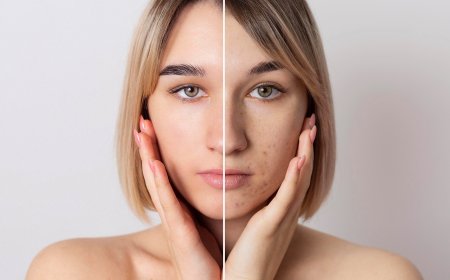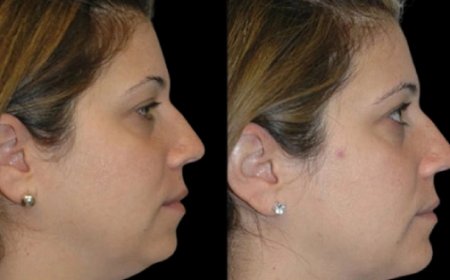Understanding the Latest Advances in Autism Treatment
Explore the newest therapies and research shaping autism treatment in 2025. This guide highlights breakthroughs and how they support children’s development.

Introduction
Finding the right treatments for autism can feel overwhelmingespecially for parents who are navigating a new diagnosis. Autism Spectrum Disorder (ASD) affects how children communicate, learn, and interact with the world around them, which is why early, personalized care is so important. In 2025, the landscape of autism therapy has expanded significantly, offering families access to innovative, evidence-based approaches.
Whether youre exploring behavioral therapies, speech and language support, or sensory interventions, understanding the latest treatments for autism is the first step toward helping your child thrive. This guide is here to walk you through the most effective options available today, combining modern research with real-world solutions tailored to each child's unique strengths.
The Landscape of Autism Therapy in 2025
Autism Spectrum Disorder (ASD) affects communication, social skills, and behavior. Since every child is different, the most successful treatments are highly individualized. Fortunately, 2025 has brought a wave of innovation to help therapists, parents, and children work more effectively together.
Todays most promising treatments combine traditional therapies like ABA and speech therapy with advanced tools, parent involvement, and personalized care plans. Lets look at the most exciting advances.
1. Artificial Intelligence (AI) in Autism Diagnosis and Therapy
One of the biggest shifts in 2025 is how AI is being used to diagnose and treat autism. AI-powered tools now help detect autism signs earliersometimes as young as 12 monthsby analyzing facial expressions, tone of voice, and behavior patterns via smartphone apps or video analysis.
In therapy, AI is used to:
-
Customize learning games based on the childs pace
-
Track behavioral data for therapists
-
Help nonverbal children communicate using AI speech generators
This technology gives families faster access to resources and helps professionals create more responsive care plans.
2. Virtual Reality (VR) for Social Skills Practice
For children who struggle with social interaction, Virtual Reality is becoming a powerful tool. VR creates immersive environments where children can safely practice:
-
Making eye contact
-
Starting conversations
-
Navigating school and community situations
Therapists guide children through these scenarios and help them reflect on their actions in real time.
Why it works: It feels like real life but gives kids a safe space to learn and grow at their own pace.
3. Personalized ABA Programs
Applied Behavior Analysis (ABA) continues to be a cornerstone of autism treatment, but in 2025, its no longer a one-size-fits-all model.
Modern ABA programs use machine learning and parent feedback to:
-
Adjust reward systems
-
Modify session structure
-
Target specific daily life challenges like transitions or toileting
Families now collaborate more closely with therapists to create programs that feel natural, playful, and focused on real-world success.
4. Parent-Led Digital Coaching
Not all families have easy access to in-person therapy, especially in rural areas. Thats why parent-led, therapist-guided digital coaching has grown rapidly in 2025.
Platforms now offer:
-
Step-by-step video coaching
-
Live therapist feedback
-
Mobile tracking tools to measure progress
Parents become empowered partners in therapy, helping their children learn skills through everyday routineslike cooking, playing, or bedtime.
5. Sensory-Based Learning Innovations
Sensory processing issues are common in autism, and new therapies are helping kids regulate better using personalized sensory plans.
Innovations include:
-
Wearable devices that track overstimulation and offer calming cues
-
Smart sensory rooms that adjust light, sound, and texture based on a childs needs
-
Apps that help kids recognize and communicate sensory overload
These tools help reduce meltdowns, improve focus, and make environments more autism-friendly.
6. Naturalistic Developmental Behavioral Interventions (NDBI)
This approach blends the best of ABA with developmental and relationship-based strategies. It focuses on learning through play, daily routines, and meaningful interactions with caregivers.
In 2025, NDBI is becoming the go-to model for:
-
Toddlers and preschoolers
-
Families looking for a more natural and emotional approach
-
Children who respond better to play-based methods
Therapists work directly with parents to build connection and communication during shared moments like playing with blocks or having lunch.
7. Assistive Technology & Communication Devices (AAC)
Communication continues to be a major focus in autism therapy. In 2025, AAC devices are more advanced, more affordable, and easier to use.
New features include:
-
Eye-tracking systems for kids with limited mobility
-
AI-generated speech that mimics the childs tone and vocabulary
-
Apps that adapt to the childs learning level and language ability
These tools empower nonverbal or minimally verbal children to express needs, feelings, and ideascreating stronger connections with family and friends.
8. Dietary and Gut Health Research
Though not a cure, emerging research suggests that gut health may impact behavior and focus in some children with autism. New 2025 studies show connections between the microbiome and neurotransmitter regulation.
Treatment options explored:
-
Probiotic therapy
-
Anti-inflammatory diets
-
Food sensitivity testing
Important: These interventions should always be guided by a pediatric nutritionist or doctor. What works for one child might not work for another.
9. Telehealth as a Standard, Not a Backup
What started during the COVID era has now become a permanent part of autism care. Telehealth is no longer just for emergenciesits now fully integrated into treatment plans.
Telehealth benefits:
-
Easier access for busy or remote families
-
Increased session consistency
-
Parent involvement during live sessions
From behavioral therapy to speech and even OT, many families are opting for hybrid care models.
10. Emphasis on Mental Health and Emotional Well-being
2025 is seeing a stronger focus on the mental health of children with autismand their families. Therapies now include modules for:
-
Emotional regulation
-
Mindfulness for children
-
CBT for anxiety and depression
-
Family counseling and support
Children with autism are more likely to experience anxiety, and these tools help them navigate the world with greater emotional resilience.
Real-Life Example: How Advances Change Lives
Meet Zara, age 6:
Zara was nonverbal at age 4 and struggled with severe meltdowns. After being introduced to an AAC device combined with sensory-focused OT and virtual ABA sessions, she now communicates her feelings with ease, handles transitions calmly, and enjoys reading with her mom.
Her mom shares:
We felt lost two years ago. Now, Zara tells us when shes tired, hungry, or just wants to cuddle. Its not just progressits a connection we never thought wed have.
How to Access the Right Support
It can be hard to know where to beginbut you dont have to figure it out alone. The team at Kickstart Therapy offers personalized assessments and therapy programs tailored to your childs unique strengths and challenges.
If you're feeling unsure, start by reading Understanding the Latest Advances in Autism Treatment. Its a helpful, parent-friendly guide that breaks down everything in more detail.
Conclusion
The world of autism treatment is changingand thats a good thing. In 2025, therapy is smarter, more personal, and more empowering than ever before. From AI to sensory tech and parent-led coaching, families have more choices to help their children thrive.
By staying informed and working closely with professionals, parents can feel confident theyre giving their child the best possible tools for success. At Kickstart Therapy, were here to walk that journey with youone breakthrough at a time.
























